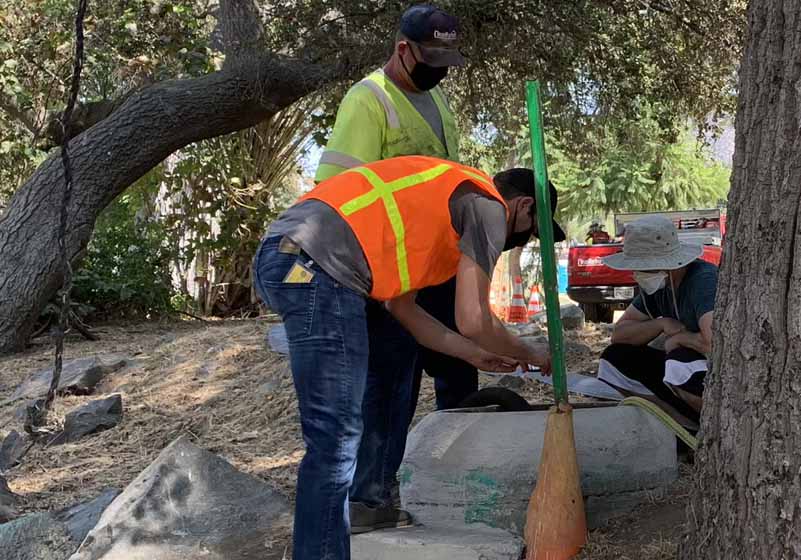Method shows promise for detecting small leaks in underground sewer pipes

SCCWRP and its partners have developed a promising new method for measuring leaks in underground sewer pipes that has the potential to detect volumetric losses of as little as a half gallon.
The exfiltration detection method, which has been undergoing pilot testing since fall 2020, involves pumping a known volume of water at a controlled rate through an isolated, 300- to 400-foot-long section of pipe, then looking for a difference in the volume pumped in vs. recovered.
Researchers decided last fall to expand the pilot testing to three sites in the San Diego area, following successful initial pilot testing in El Cajon.
The new method is intended to support an ongoing, multi-year effort to identify the origins of widespread fecal contamination in Southern California waterways during wet weather.
More news related to: Microbial Source Tracking, Microbial Water Quality